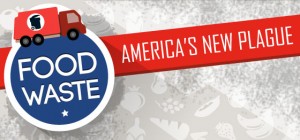Food waste in the United States is a problem of epidemic proportions. Not only are we throwing money down the drain, but people in need are going hungry while we bask in excess.
Pledge to waste less food by:
- Getting the facts about “expiration dates”
- Buying “misshapen” fruits and veggies that get tossed because they’re not “pretty”
- Storing your fruits and vegetables properly so they don’t spoil prematurely
- Taking home restaurant leftovers (including the bread basket)
- Asking your bakery to donate to a food pantry (many stores throw baked goods after 12 hours!)
- Supporting stores that supply food pantries (Meijer, WalMart & Aldi are examples of stores that donate)
- Using all parts of the meat you buy (Buying a whole chicken? Make broth out of the bones and scraps)
- Saving and freezing the ends of onions, celery, carrots, etc. and making broth at the end of the month
- Checking out this graphic to learn more about food waste:

Food Waste: America’s New Plague
The World’s Population…Keeps Growing
- It will reach 9 billion in 2050
- More people = more food needed to feed them
- How are we going to produce all this extra food?
- Perhaps we should look first at how much food we are wasting. It’s estimated that nearly half of our food supply is wasted!
- It’s not because we don’t have enough–we have so much we can’t handle it properly
- It’s not just individuals throwing out uneaten food (although that’s a problem)
- We have a major problem with the production process.
- Farmers are “covering their bases” and over harvesting crops
- This results in an oversupply beyond what the market demands
- The end result? More than 6 billion pounds of fruit and vegetables are unsold or unharvested each year.
Trashed at the Storefront
Farm processes certainly aren’t all to blame. A great deal of waste also occurs at the retail level: Let’s talk about 43 billion pounds trashed in 2008, and why.
- Richer nations also tend to value aesthetic/non-nutritive qualities in food
- Not perfectly shaped/colored/sized? Thrown away!
- Case example: An investigation into a British carrot supplier showed
- Could redistribution be the solution?
America: The Land of Plenty (And Plenty Thrown Away)
- It probably comes as no surprise that the USA is a prime food-waster that edible carrots that were not perfectly straight were sold as animal feed. The reason: Consumers should be able to peel them with one stroke. Is it worth it?
- Expired food is also a problem.
- Every day, a store tosses on average more than $2,000 worth of food that has passed the “sell-by” date.
- Almost none of these “sell-by” dates are legally regulated—they’re just guidelines
- Virtually all of the food is still fine to eat!
- Stores in general are concerned with a “freshness” image of “bounty”
- This causes them to throw out ready-made items (such as deli food) after a very short amount of time
- They don’t allow displays to sell out; rather keep restocking and throwing out older items
- Preset orders of produce are often too large for some stores, resulting in overstock and waste.
Developing Countries: Different Issues
Although Americans can waste up to 10 times more food than someone in, say, Southeast Asia—developing countries have issues with food distribution as well.
- Waste also occurs but in a totally different platform
- Almost none is wasted at the consumer level: Families can’t afford to waste food
- However, more than half the food loss occurs early on in the production cycle
- Farmers in need of food or money often prematurely harvest crops, resulting in some of it being unfit for consumption
- The lack of proper storage facilities and transportation to market can also result in the loss of a tremendous amount of food
Case Example: Would you eat this? In some developing countries, rice is dried the natural way–laid out in the sun. Although this method sounds organic and has been around for centuries, it can expose the grain to rodents and parasites, ruining some of it for safe consumption.
Feeding Into A Solution
Redistribution will help the global food supply needs tremendously. Reducing food losses by just 15% could feed an estimated 25 million Americans per year—and this could be applied globally as well.
So what are the best steps to take?
- Cooperation and communication between farmers: A surplus of one farm’s harvest could supplement a shortage on another, solving the problem of overproduction
Educational outreach to consumers on “sell-by” dates and what they really mean
- Imperfect but still edible foods can be made into ready-to-eat products, sold at discounts or as part of store incentive programs
- Going a step further, special markets or charitable organizations could be developed to sell only “damaged” or substandard items that are perfectly fine for consumption
- Stores can communicate with shoppers: Do they care if the fruit is not the right size? Would they pay less for something that still tastes good?
- In developing countries, local governments can work to create central marketing systems for farmers, making it easier to produce safe product
And of course, start at home with the simple things:
- A little thought can be put into reducing waste on the household level
- Think about what you throw away: Can it be used?
- Scour social media for creative leftover ideas: Pinterest has a wealth of tasty tips for second-time-around meals (just search “leftovers”)!
- Don’t assume anything can’t be reused, and don’t forget the basics: Bones make soup, bruised produce can be put in baked items, etc.
These are just a few ideas to start working on the growing issue of food shortage in the world, but as demonstrated by the figures here, a little effort can feed a lot!
Grocery Coupon Network really cares about making sure people have access to healthy food. If you have other ideas on how we can waste less food as Americans, please share here in the comments.
Source: Grocery coupon network

